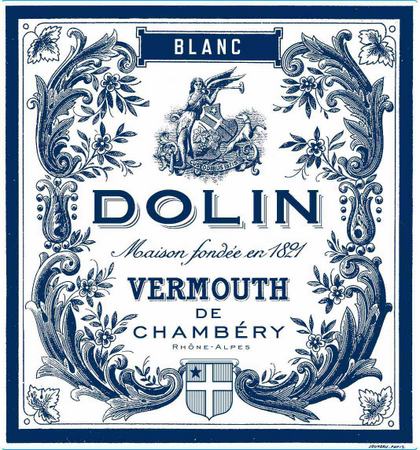 DOLIN VERMOUTH DE CHAMBÉRY blanc
DOLIN VERMOUTH DE CHAMBÉRY blanc
In the history of vermouth, there are four principal production regions, each with its own distinctive style and varietals. Two of these regions are protected designations of origin: Vermouth di Torino and Vermouth de Chambéry, with a third, Vermut de Reus, awaiting formal recognition. Vermouth di Torino is the original “Italian sweet red,” generally rich and sweet. Vermouth de Chambéry is famous for a clean, light and floral style. These qualities made possible (and famous) the Martini at 1:1 gin to dry vermouth.
Chambéry is also home to the first clear sweet vermouth, called “blanc.” Vermouth de Reus are generally less sweet than Italian varieties, smooth and wormwood forward. Over 95% sold is Red (Rojo/Roig) on ice with olives and potato chips. Marseilles style (e.g., Noilly Original Dry) is historically a lightly aged, oxidative vermouth, made famous in the kitchen for deglazing and cream sauces. The West Coast/Modern styles had an uneven start post-war, but today there are quality products and sometimes unique taste profiles.
Dolin is among the few remaining independent producers of vermouth and the last to produce Vermouth de Chambéry. Dolin continues to make the authentic product according to the principles which earned Chambéry France’s only A.O. for vermouth back in 1932.
This means production in Chambéry itself, maceration of real plants rather than pre-prepared infusions, and sweetening only by grape must, wine, and/or sugar. After a family transition in 1905, the company is today in the fifth generation of the Sevez family. The particular quality of Vermouth de Chambéry was first identified in 1821 by Joseph Chavasse, whose son-in-law Ferdinand Dolin inherited the recipe and the now eponymous company. Dolin Vermouth was winning medals in Philadelphia, St Louis, and London in the late 19th century, and still remains the benchmark for fine French vermouth.
A hallmark of Vermouth de Chambéry was the creation of the Blanc (aka Bianco) style, a first clear vermouth, of which the Dry recipe has been celebrated in cocktails from the 1920s onwards. According to Chavasse’s recipe, the base wine was made from local grapes. However, phylloxera led to replanting in the region with red varieties, or overly aromatic whites such as Jacquère. As with Cognac and Armagnac, the best base wine is very light, and as neutral as possible. Not surprisingly, the majority of the base wine now comes from the Armagnac vineyards of the Gers in addition to local/regional producers. On the other hand, the particular flavors and aromas of the plants are of crucial importance, and the Dolin secret recipe continues to be made from the herbs and aromatic plants naturally found in the Alpine meadows above Chambéry. These are individual vermouths of remarkable freshness, purity, and complexity.
The sweet, pale ‘Blanc’ variety of vermouth was first created and made famous by Dolin in Chambéry long before Italian producers replicated the style as ‘Bianco’. The Blanc is traditionally served with a sliced strawberry, a splash of soda, and a twist. Dolin blanc’s elegance and slight vanilla edge marry beautifully in the ‘new classic’ Blond Negroni. In other cocktails, Dolin Blanc pairs well with Blanco tequila or other flavorful clear spirits. It is ideal for infusions of melon or other fruit, and an appetizing accompaniment to a wide variety of cheeses.
Recipes
Tequila Corpse Reviver
3/4 ounce Blanco tequila
3/4 ounce blanc vermouth
1/2 ounce triple sec
1 teaspoon Absinthe
3/4 ounce lime juice, freshly squeezed
1/4 ounce orange juice, freshly squeezed
Rinse coupe glass with Absinthe – dump; mix the remaining ingredients in a shaker with ice. Stir well, Strain
Orange twist as garnish
Pear Martini
Stir with ice
Equal parts Poire William and Dolin Blanc
Strain into a glass.
Lemon peel as garnish
Blond Negroni
Stir with ice:
Equal parts London Dry Gin, Dolin Blanc, Gentian Liqueur (Suze, Salers or Avèze)
Grapefruit peel as garnish

